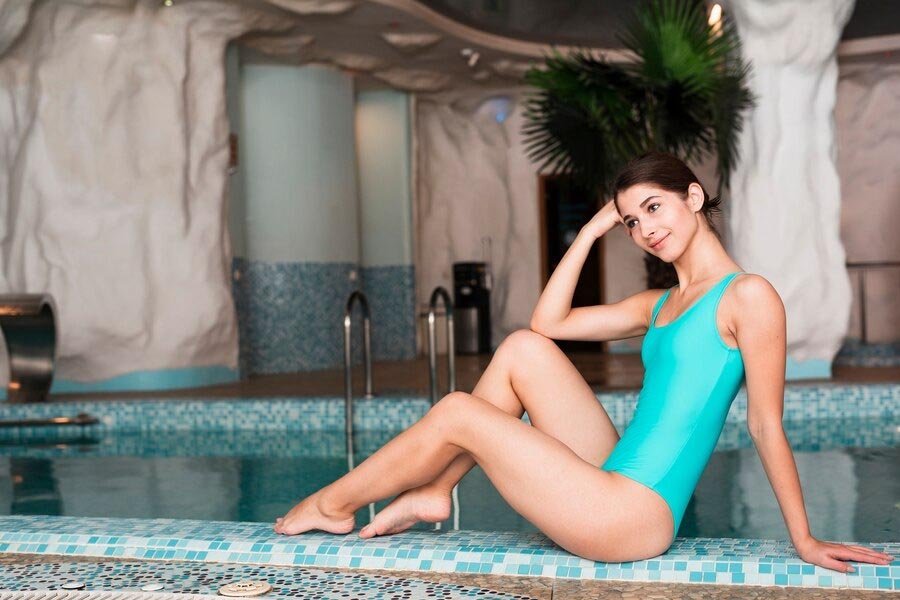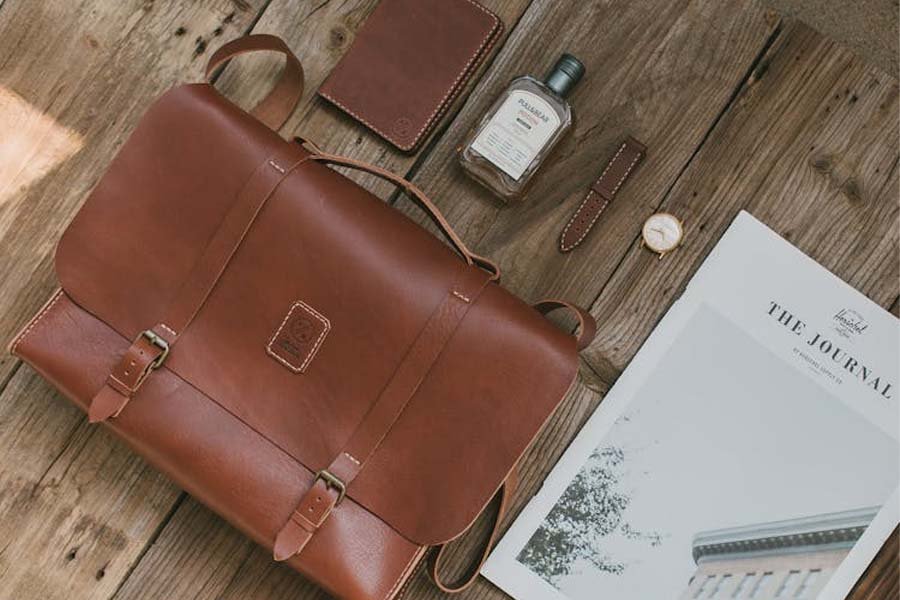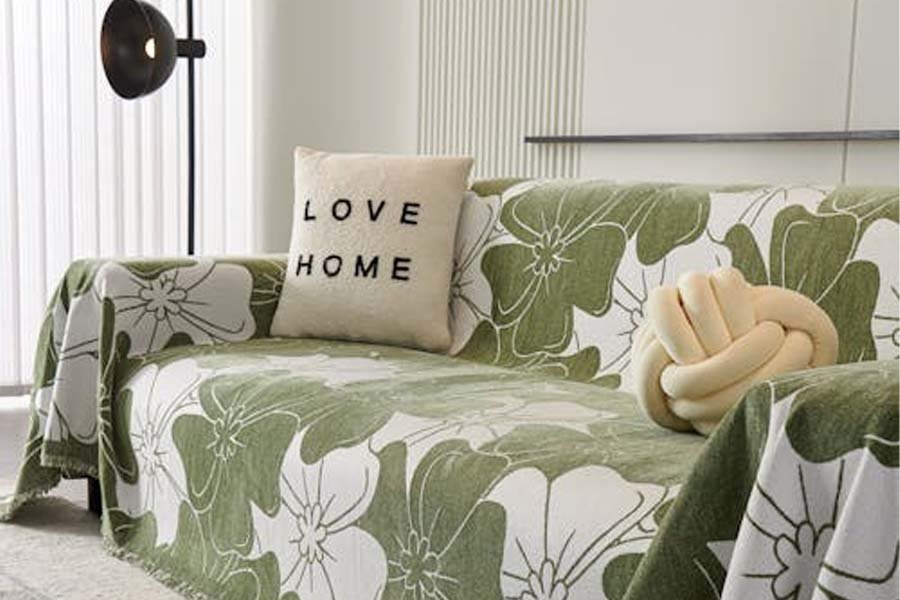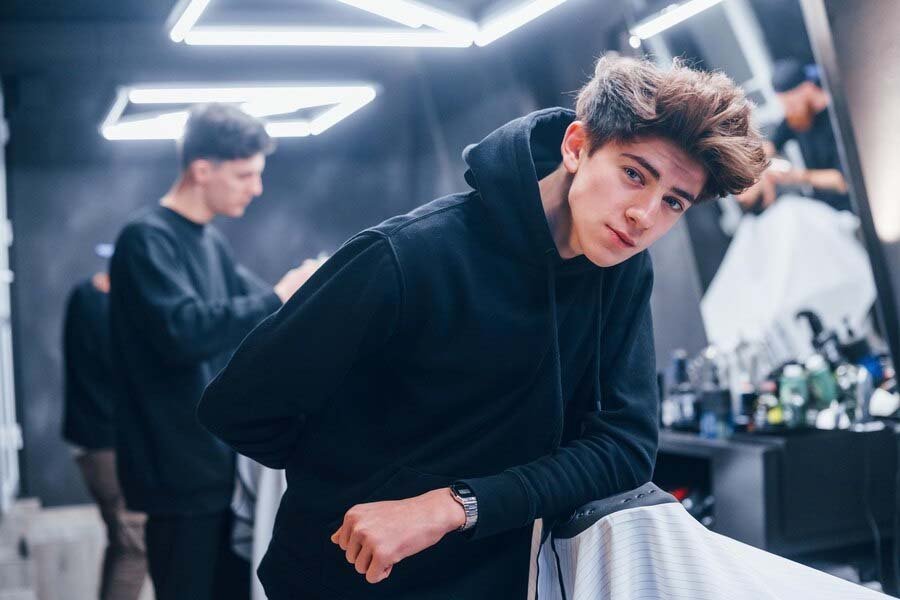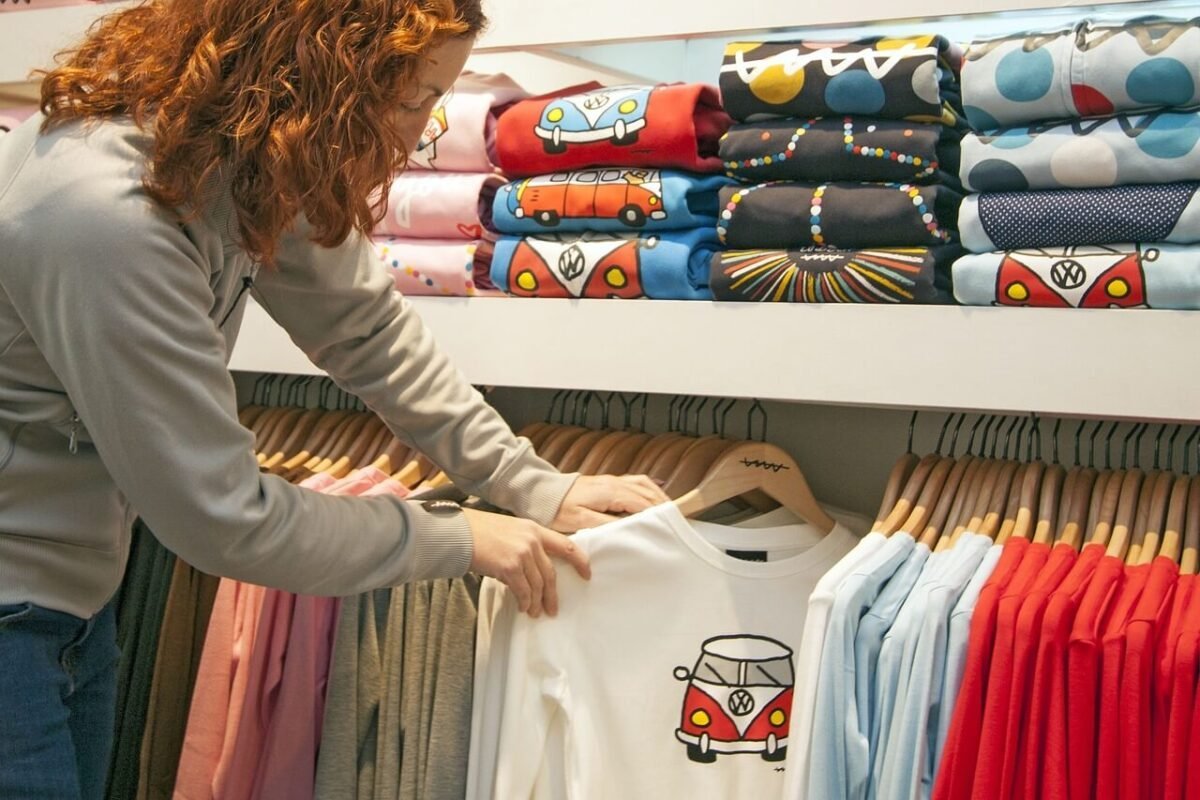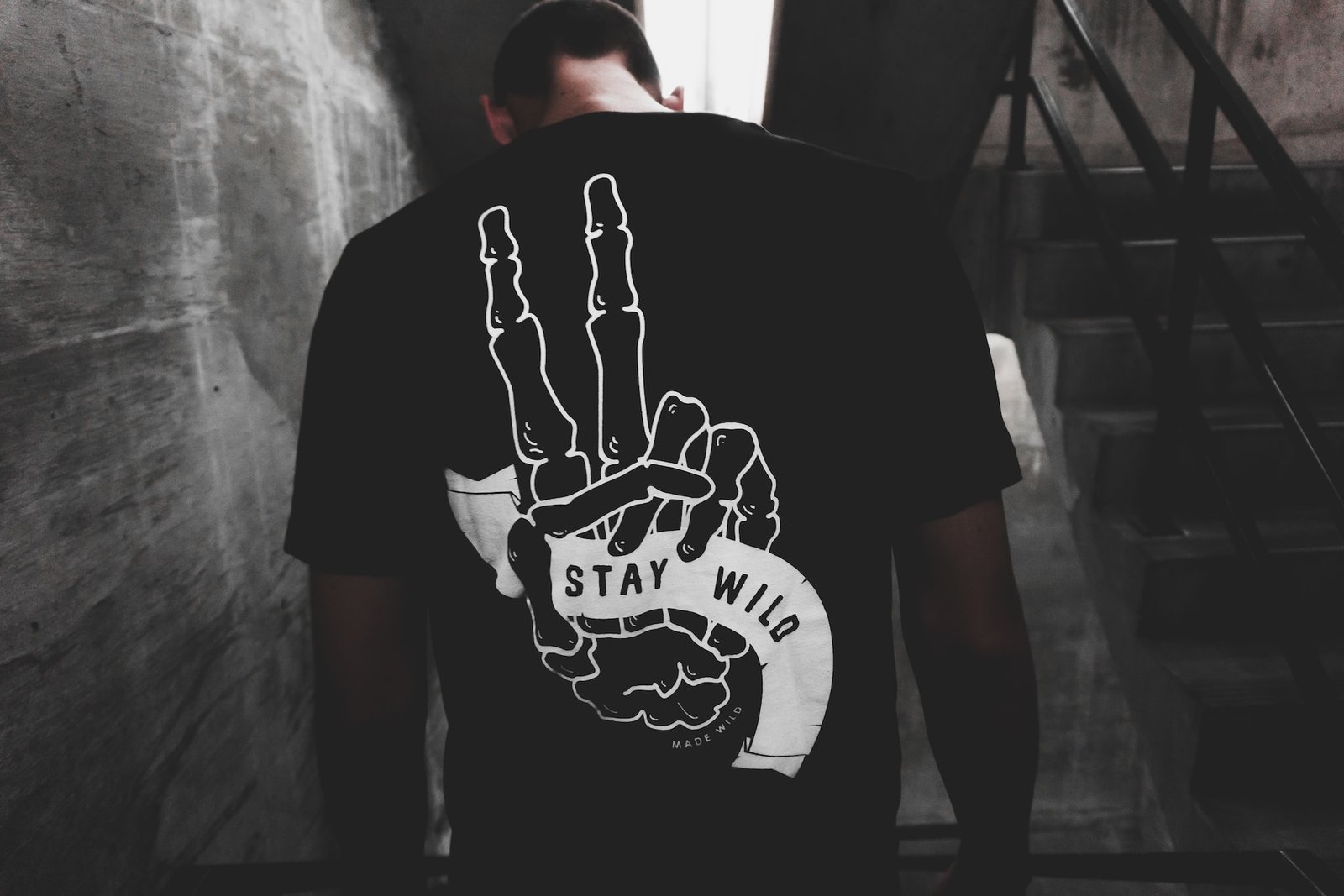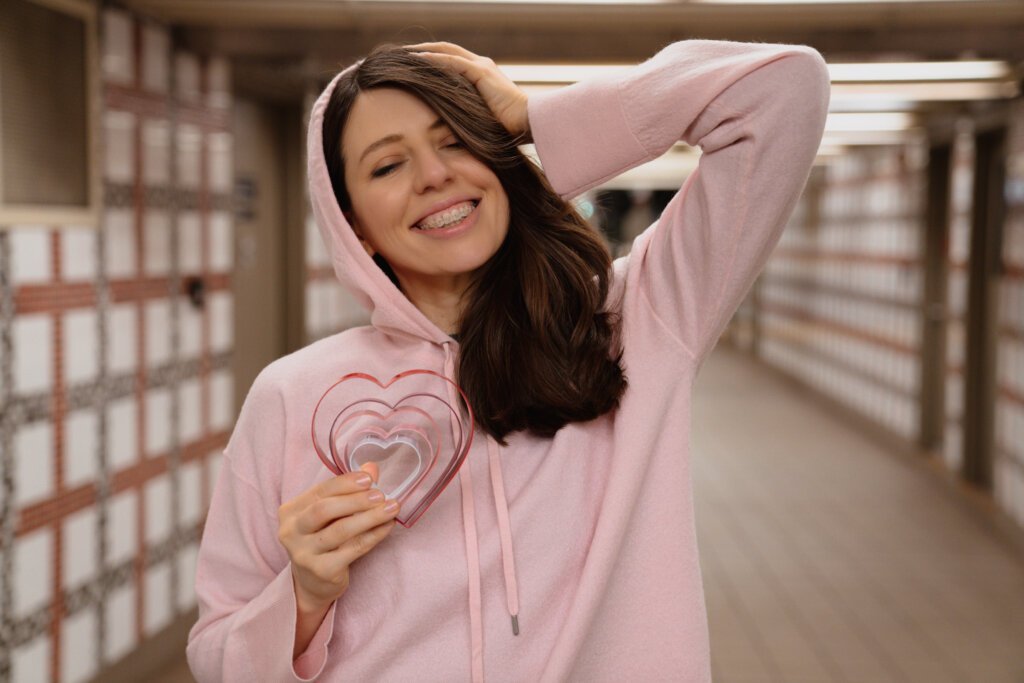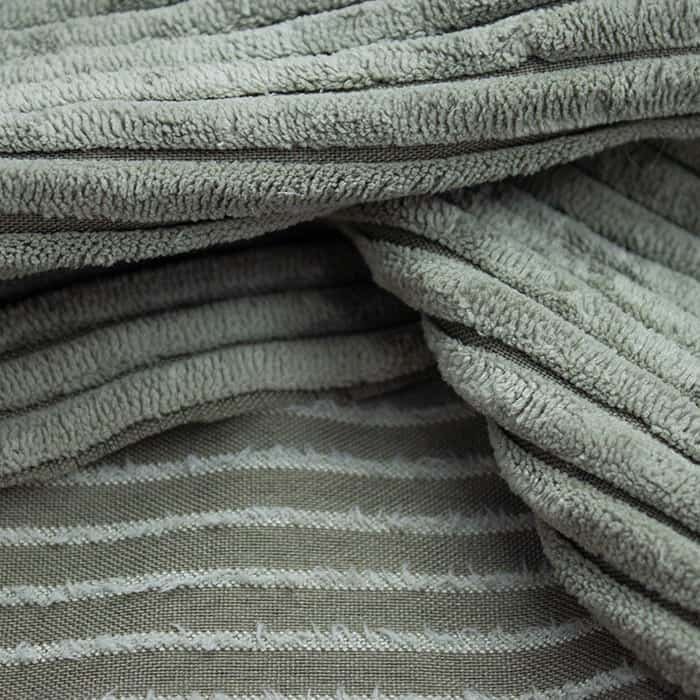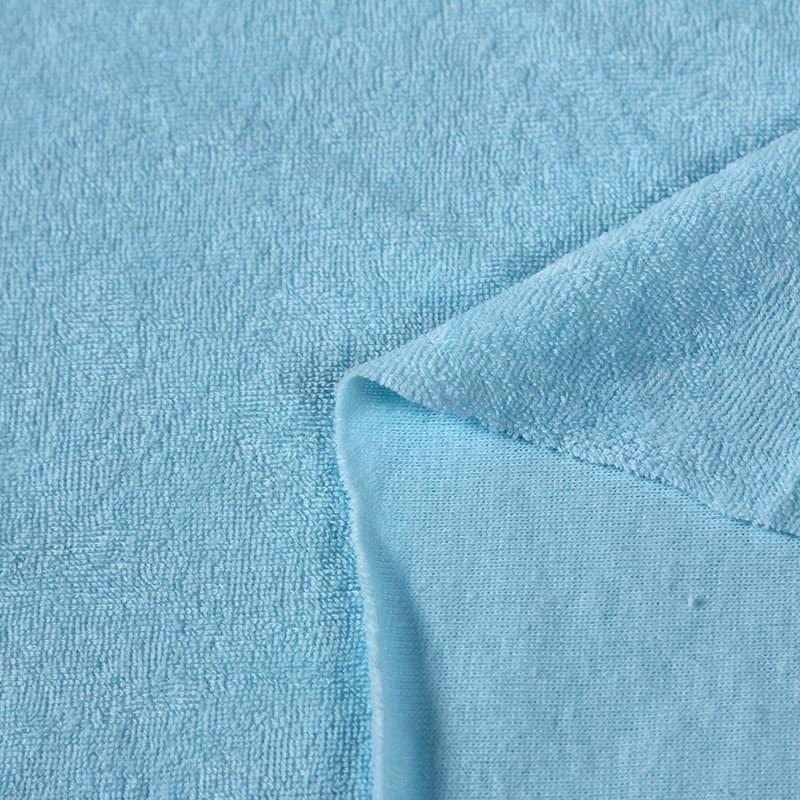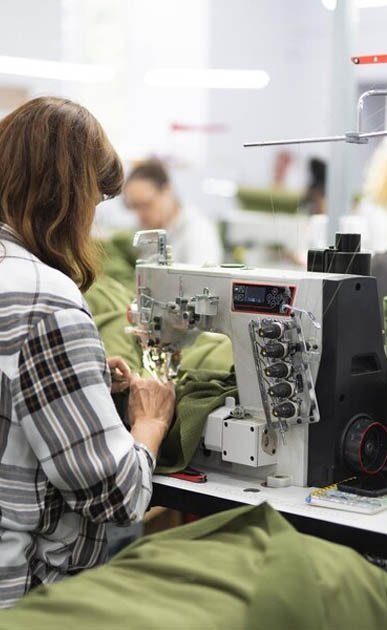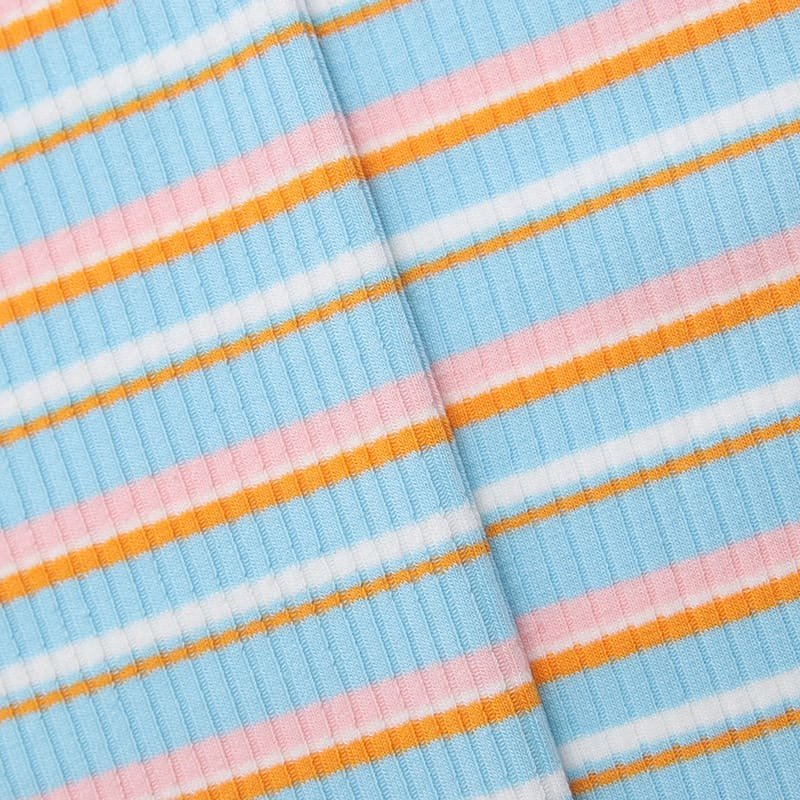
Rib knit fabric is popular due to its ribbed texture. It is created using a specific knitting technique that produces raised vertical ribs along the fabric’s surface. These ribs give them their unique appearance and contribute to their stretchability and versatility.
Knitted fabric has a long history, dating back to the Middle Ages. Rib knit fabric was first used for socks, gloves, and undergarments because of its stretch and elasticity. As knitting technology improved, it became popular in fashion.
What Is Rib Knit Fabric?
Rib knit fabric has a vertical rib pattern created by using a specific knitting technique to alternate raised wales (vertical columns of stitches) and recessed courses (horizontal rows of stitches).
This produces parallel ribs running vertically along the fabric’s surface.
The fabric can be made from different fibers, including natural fibers like cotton, wool and synthetic fibers like polyester and nylon. The combination of other fibers is also common. This offers a blend of desirable properties such as breathability and warmth.
Characteristics of Rib Knit Fabric
Rib knit fabric is a versatile textile with a number of unique characteristics that make it a popular choice for various applications. Rib knit fabric is available in a wide range of colors and patterns, making it a versatile and stylish choice for a range of different clothing items. The rib knit fabric is popular for its:
- Stretchability and elasticity
- Flexibility
- Structure and Durability
- Breathability
Different Rib Knit Pattern Construction
Rib knit fabric can be made using different patterns. The choice of the pattern depends on the desired look, stretch, and use of the garment. Different rib knit patterns can create varied textures, widths, and visual effects.
1×1 Rib Knit
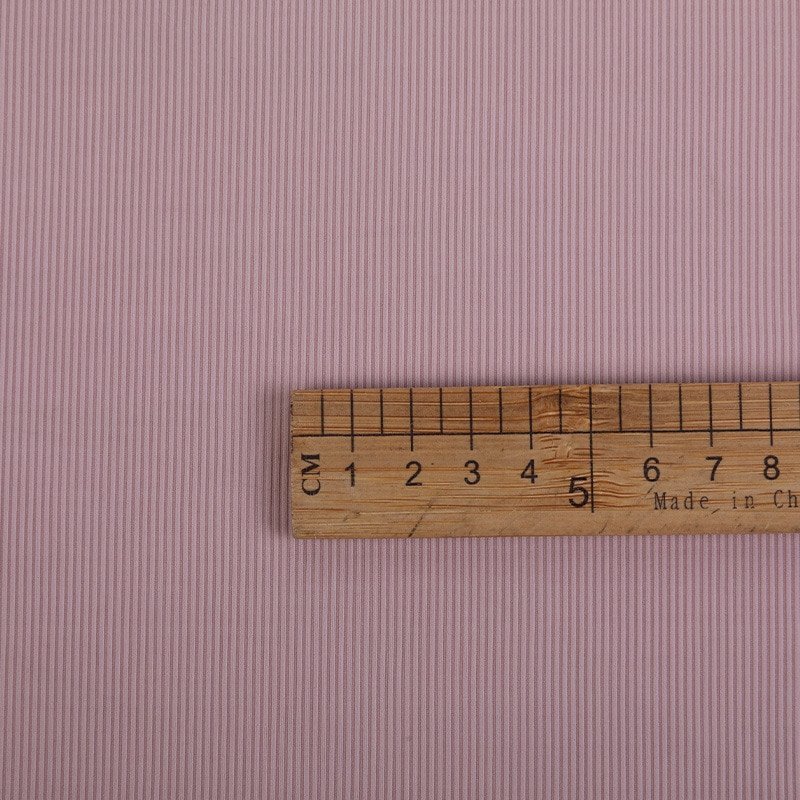
This is the most common rib knit pattern. In this pattern, each wale is alternated with a single course, creating a tight and compact ribbed structure with a 1×1 ratio of raised ribs. It is often used for hems, cuffs, and collars.
2×2 Rib Knit
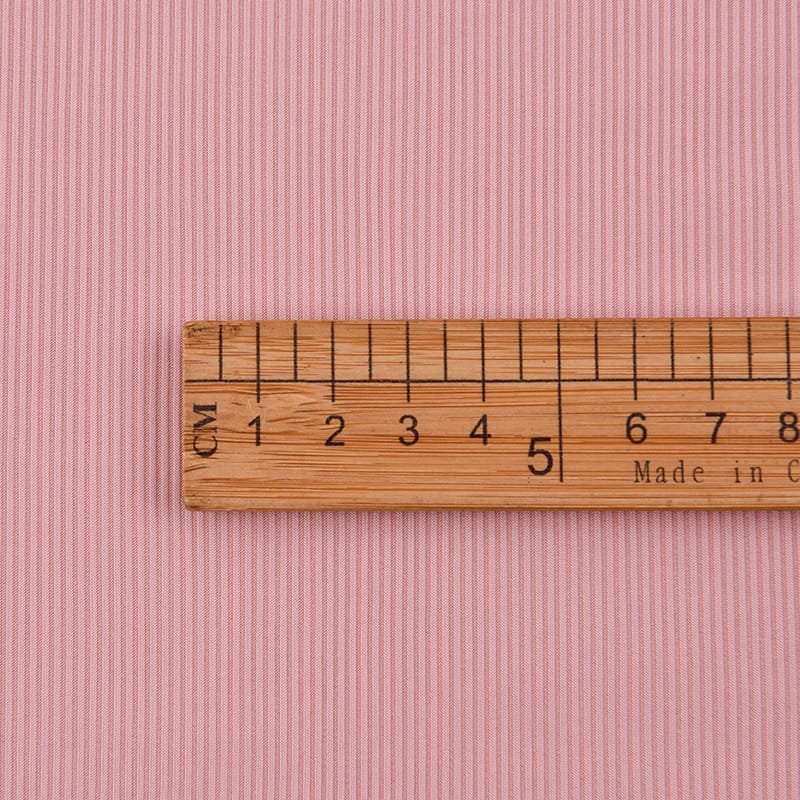
This pattern consists of two wales alternated with two courses, creating a slightly wider ribbed structure with a 2×2 ratio of raised ribs. It is commonly used in hats, sweaters, and scarves.
3×3 Rib Knit
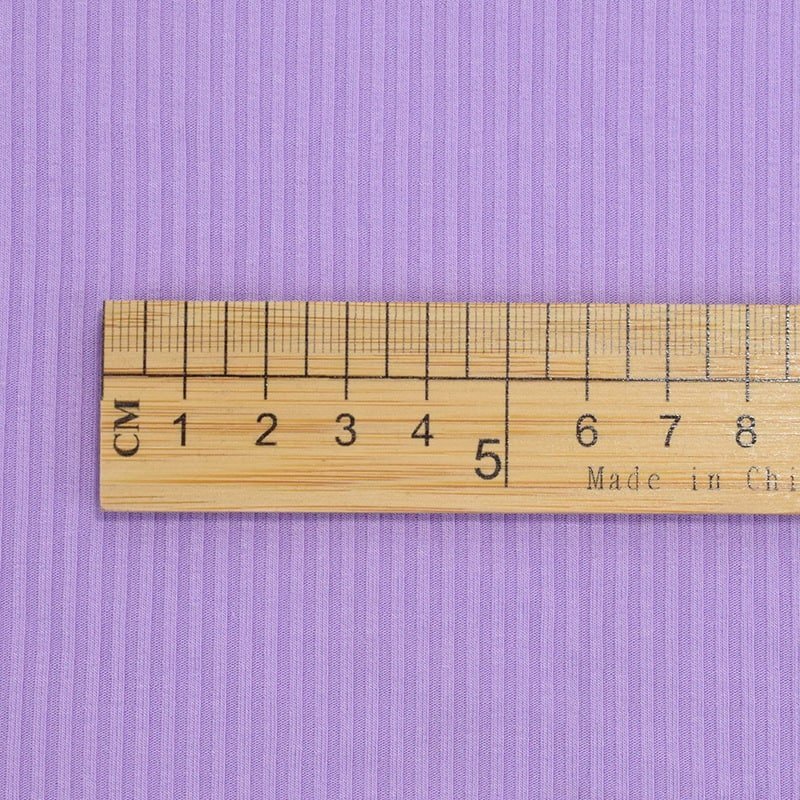
This pattern consists of three wales alternated with one course, creating a ribbed structure with a wider center rib and narrower side ribs. It is commonly used to create decorative details on garments.
2×1 Rib Knit
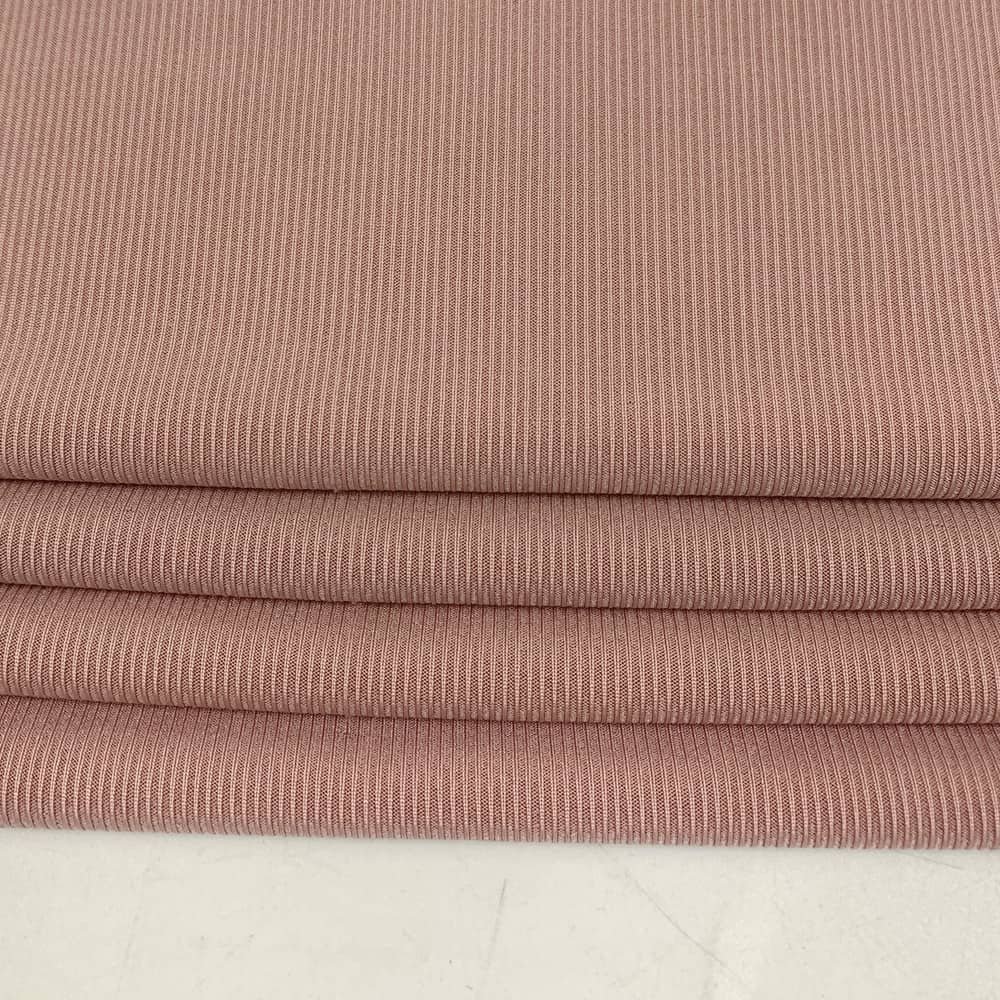
This knitting pattern consists of two vertical columns of stitches, or “wales,” alternated with one horizontal row, or “course.” It produces a ribbed structure with a wider center rib and narrower side ribs. This pattern is often used in waistbands, neckbands, and cuffs.
Flat Rib Knit
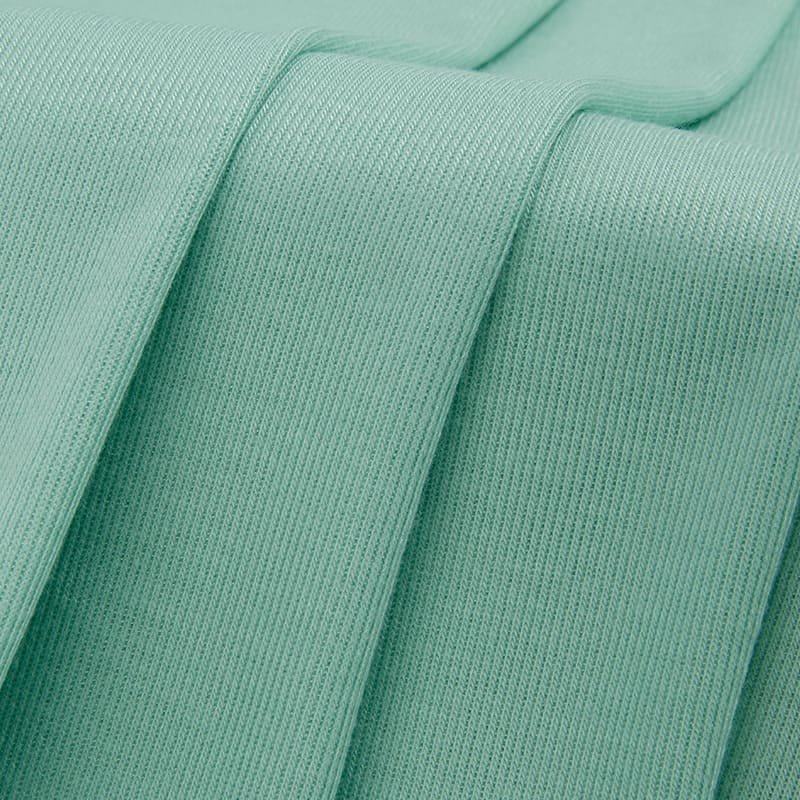
The flat rib knit pattern consists of alternating raised and recessed wales. This pattern is similar to regular ribbing fabric, but the fabric lies flat without forming the distinctive vertical ribbed texture.
It is often used in sportswear and activewear because of its stretch and moisture absorption properties.
Different Types of Rib Knit Fabric
There are various types of rib knit fabric, each with its own characteristics and uses. Each type offers different textures, stretch, thickness, and uses.
Tubular Rib Knit Fabric
Tubular Rib Knit Fabric is known for its unique texture and stretchy quality. It is commonly used in the creation of garments such as t-shirts, tank tops, and sweatshirts.
The fabric is made by knitting the yarn into a tube shape, which creates a ribbed appearance. It is a comfortable option for activewear and other clothing items that need to be worn for extended periods of time.
Circular Rib Knit Fabric
Circular Rib Knit Fabric is a type of fabric made using circular knitting machines, which produce a continuous tube of fabric. It’s stretchy and has a unique texture, making it a popular choice for clothing.
Lightweight Rib Knit
Lightweight rib knit fabric is perfect for creating summer clothing that requires a lighter feel and drape. It is commonly used for T-shirts and tank tops.
Medium Weight Rib Knit
Medium-weight rib knit fabric is thicker and warmer than lightweight rib knits, but still comfortable. It is often used for sweaters, cardigans, and other mid-weight garments.
Heavyweight Rib Knit
Heavyweight rib knit fabric is thick and provides extra insulation and warmth, making it ideal for colder climates and winter garments such as sweaters, jackets, and coats.
Fine Rib Knit
Fine rib knit fabric is often used for trimmings, cuffs, and collars in garments due to its delicate appearance and smaller ribbed textures.
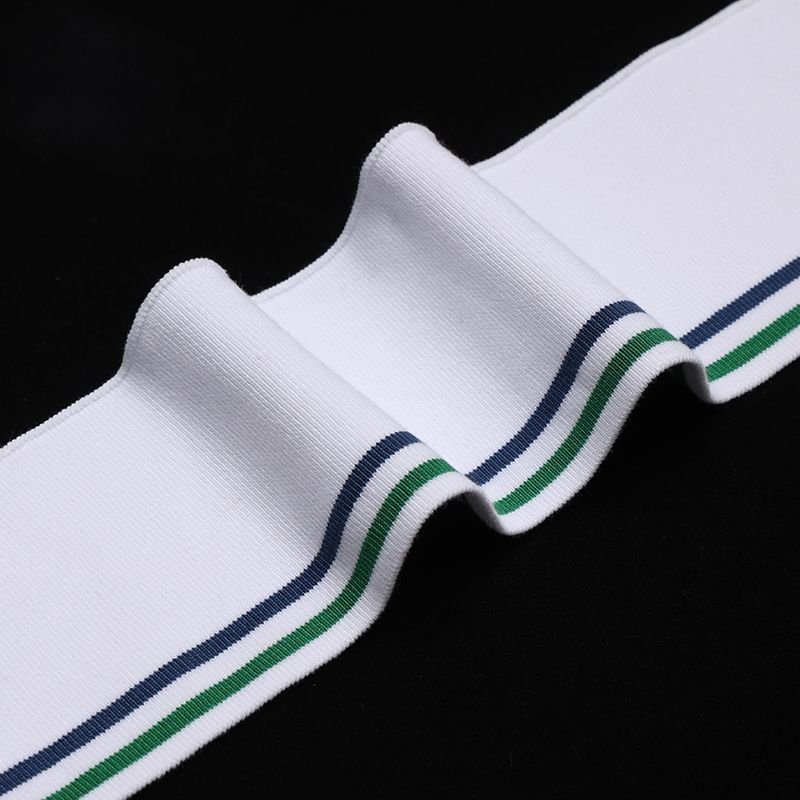
Common Uses of Rib Knit Fabrics
Rib fabrics are commonly used in clothing for its stretch, texture, and versatility.
T-shirts
Rib knit fabrics are often used in tops like T-shirts and tank tops. It gives a comfortable stretch, which enhances the fit of the garment.
Tops / Dresses / Skirts
Rib knitted fabrics are stretchy and comfortable materials that are great for creating fitted clothing like tops, dresses, and skirts.
It is ideal for creating lightweight pieces that are perfect for warmer weather.
Socks and Stockings
Rib knit is often used for socks and stockings due to its stretch and elasticity, which ensures a secure and snug fit.
Sportswear and Activewear
This fabric is common in sportswear and activewear because it stretches and absorbs moisture, making it a popular choice for leggings, athletic tops, and other activewear.
Waistbands, Cuffs and Hemlines
Rib knit is often used for waistbands and hems in pants, skirts, and shorts to keep the garment in place and add texture. The ribbed texture keeps the garment in place and contributes to aesthetics.
Accessories
Ribbing fabrics are great for making warm and comfortable headbands, gloves, scarves, and hats.
Conclusion
Rib knit fabrics are a versatile and widely used material in fashion. It has a raised vertical ribbed pattern, excellent stretch, durability, and comfort. It comes in different weights and textures, allowing for various designs.
The stretchiness and softness of rib knit fabrics make them an excellent choice for people who prioritize comfort and coziness in all seasons.

